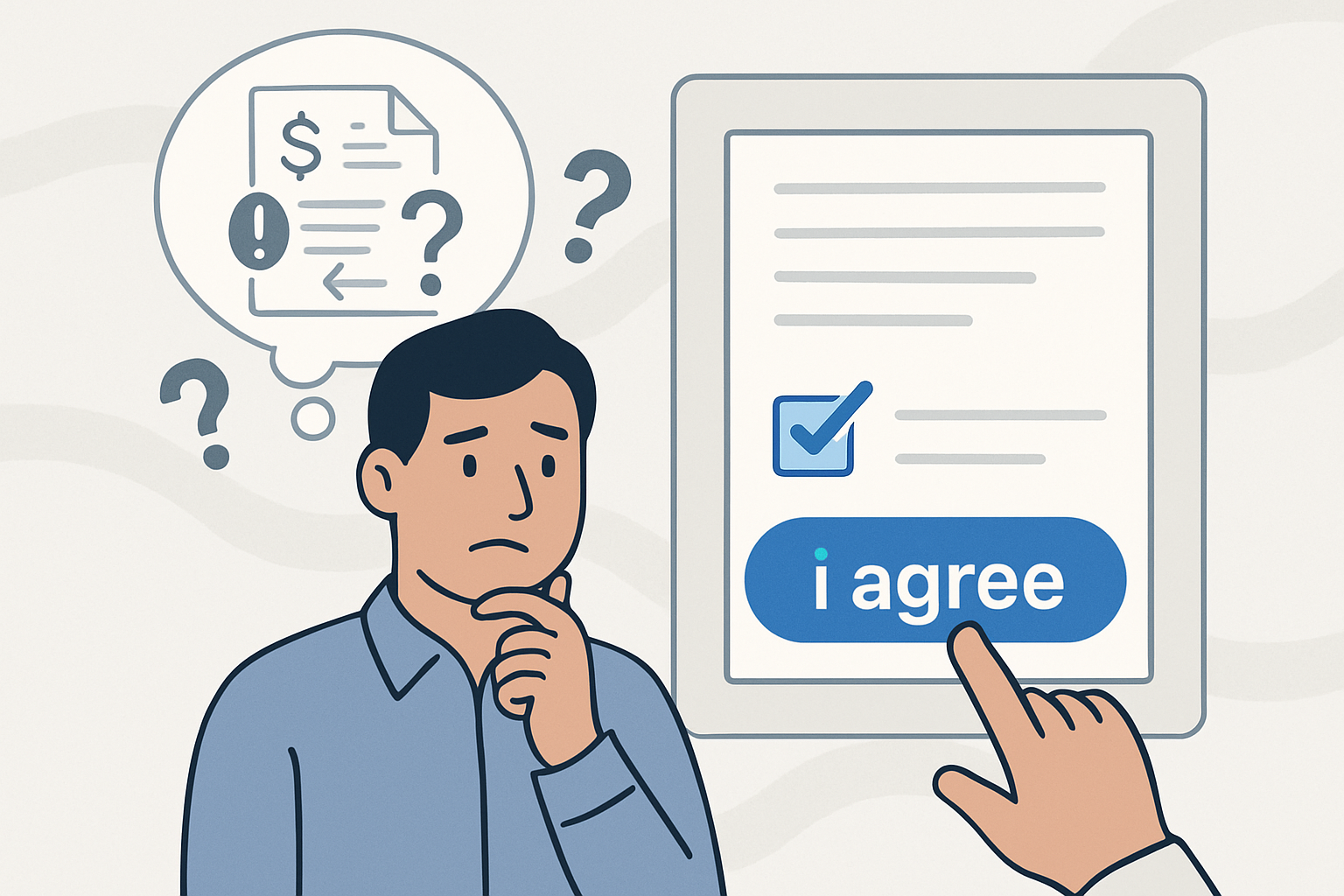Agreements have been at the heart of human civilisation for thousands of years. From ancient handshakes to cutting edge digital signatures, the way we make commitments has evolved significantly. Let us take a journey through the history of agreements and signatures, exploring how they have changed over time and what the future holds.
In this blog, we’ll explore:
- Ancient times: seals, symbols, and trust
- The rise of handwritten signatures
- The birth of modern contracts
- The age of signatures and notarisation
- Digital transformation: e-signatures and beyond
- The future of agreements: smarter, safer, and more accessible
- Final thoughts
Ancient times: seals, symbols, and trust
Long before paper and ink, agreements were based on verbal promises and trust. Early societies, including the Mesopotamians and Egyptians, formalised deals using clay tablets and seals. These seals, often carved with unique patterns or symbols, served as a form of authentication, proving that a contract was legitimate.
The ancient Egyptians relied on pictorial scripts (hieroglyphs) to record agreements on papyrus. Meanwhile, the Romans introduced the concept of written contracts, using wax tablets, Tabelliones (notaries) and signatures to confirm agreements, laying the foundation for modern legal systems.
The rise of handwritten signatures
Paper was first created in China by the Han Dynasty. It was later introduced in the 8th Century to Islamic nations followed by Europe during the conquests of Spain. Paper mills were established by Spain and Italy by the 12th century. By the 1300s-1500s, paper became widely used in Europe for commercial and governmental documents. Medieval merchants and banks relied on handwritten contracts for trade deals, loan agreements, and financial transactions.
During the Middle Ages, handwritten signatures became a standard method of validating agreements. As literacy spread, people began signing documents to confirm their authenticity. Royalty and high-ranking officials often used elaborate signatures or "signets"—special wax seals stamped with unique designs—to prevent forgery.
In 1301, King Edward I of England issued renewed documents as previously issued documents were forged and counterfeit. This was the result of previous documents being replicated using copies of the Royal Seal to grant land and legal legislation. In fact, during the War of the Roses, York and Lancaster factions often tried to use stolen seals to issue commands and 'fake' legitimacy.;
One of the most famous agreements of this time was the Magna Carta (1215), where King John of England was forced by the barons to place his royal seal, signifying his commitment to upholding certain rights. This marked a pivotal moment in the history of legal agreements.
The birth of modern contracts
In the 16th and 17th century paper focussed contracts were used widespread across the world to enable international trade between Europe and Asia. In 1543, the Portuguese were the first Europeans to reach Japan, offerings firearms, religion, and new trade options. They offered advantageous trade routes with China and India trafficking silk, silver, and spices. Portuguese officials relied on Japanese warlords known as Daimyos to broker deals. These deals were written in Portuguese or Latin and were translated to Japanese characters.
By the 17th and 18th centuries, paper-based contracts became widespread, thanks to advances in printing and administration. The industrial revolution further expanded the use of written agreements, as businesses and governments required standardised contracts to regulate trade, employment, and ownership rights.
With more international trade developing, contract law became more standardised. The Statute of Frauds (1677) in England required certain agreements to be in writing, setting an important precedent for modern contract law.
The age of signatures and notarisation
Notaries originated during the Roman Empire but were called Tabelliones. They were drafted to authenticate documents ensuring validity to courts. Notaries expanded through the Byzantine Empire through to modern day being recognised as an important cog in the legal system. The 19th and 20th centuries saw a rise in notarised documents, where official witnesses, known as notaries, confirmed the validity of signatures and agreements. Signatures became legally binding across the world, with each country introducing specific regulations to ensure contracts were enforceable.
As legal documents evolved into becoming more complicated and lengthier, they eventually required more than a signature. Printing someone's initials onto documents were introduced. These were added as an added level of consent and acknowledgment of understanding. They were also introduced to save time when scouring over lengthy documents, for example, one's initials could be printed to prove that they recognised specific clauses within longer legal documents. On top of that, often agreements had multiple signatories. By adding each party's initials offered a simpler way for each party to understand which and what parts of a legal document was applicable to them.
When typewriters and printers were introduced, they revolutionised agreements. Agreements became more accessible, reduced errors in handwritten agreements and allowed businesses to produce legally binding documents more efficiently. Typewritten text also eliminated handwriting variations within documents and became more uniform and easier to understand. It also meant that documents no longer needed to be handwritten meaning documents were sent out faster and efficient. This meant making revisions (and negotiations) much easier to go about oppose to handwritten documentation.
Digital transformation: e-signatures and beyond
The earliest introduction of e-signatures was introduced in the 1980s by PKI’s (Public Key Infrastructure) which offered document authenticity. Then in 2003 the widely known DocuSign introduced their approach to authenticating documents. These approaches experienced thick barriers to entry, including:
- Legal recognition: Many countries were slow to adopt laws supporting e-signatures.
- Security concerns: Early systems lacked robust identity verification.
- User trust: Businesses and consumers were sceptical about the legitimacy of digital agreements.
As the world moved into the digital age, agreements followed. The Electronic Signatures in Global and National Commerce Act (ESIGN) in the US (2000) and the eIDAS Regulation in the EU (2016) gave electronic signatures the same legal status as handwritten ones. This paved the way for businesses and individuals to sign contracts remotely, reducing paperwork and increasing efficiency.
Today, e-signature platforms allow contracts to be executed instantly from anywhere in the world. However, e-signatures didn’t change the process, they just took it online.
The future of agreements: smarter, safer, and more accessible
The next phase of agreements will involve smart contracts. Self-executing contracts that automatically enforce terms without human intervention. AI will also play a role in analysing and simplifying contracts, ensuring that agreements are clear and easy to engage with.
However, modern e-signatures being combined with AI poses a problem. Relying on AI to complete agreements shifts people away from directly engaging with contracts. In the past, contracts relied on direct engagement and intentional participation with their deals and people undertook them with care and due diligence. But modern contract companies such as DocuSign, Adobe sign, and HelloSign now enable Mass Document Signing, which allows individuals to not even view the document to be signed and customers are presented with a simple “Click to sign.” Taking away every form of informed consent and engagement with one's contracts.
As well, this introduces the Infinite Scroll contract problem. The infinite scroll theory is the idea that we automatically scroll to the bottom of a document and “click to sign.” This is where someone can sign a contract with such a high degree of ease that they can sign a contract anywhere anytime. In the past, contracts were analysed in an appropriate environment and reviewed thoroughly, e.g., in an office meeting. Now contracts are signed, at home, the pub, or a restaurant. Ease of use has gone further than is beneficial. This issue with this is that it imposes massive issues when it comes to knowing what you have signed. It imposes a complete disregard of informed consent and puts convenience ahead of acknowledgment of terms.
At  i agree , we are embracing this evolution differently. By making agreements more transparent, fair, and accessible, our platform ensures people directly engage and understand what they’re agreeing to, removing complexity, and bringing agreements into the digital era without compromising understanding and protection.
i agree , we are embracing this evolution differently. By making agreements more transparent, fair, and accessible, our platform ensures people directly engage and understand what they’re agreeing to, removing complexity, and bringing agreements into the digital era without compromising understanding and protection.
Final thoughts
From ancient seals to AI driven contracts, the history of agreements reflects humanity’s need for trust and security in transactions. As technology continues to evolve, so do our methods of ensuring fairness and accountability. The future of agreements is not just about signing, it’s about understanding, transparency, and ease of use.
Are you ready for the next evolution in agreements? Let us make them clearer and fairer—together.
Ready to try the future?
Explore how  i agree can help you create contracts people actually understand.
i agree can help you create contracts people actually understand.
Check out our FAQ or try our demo to see how it works




